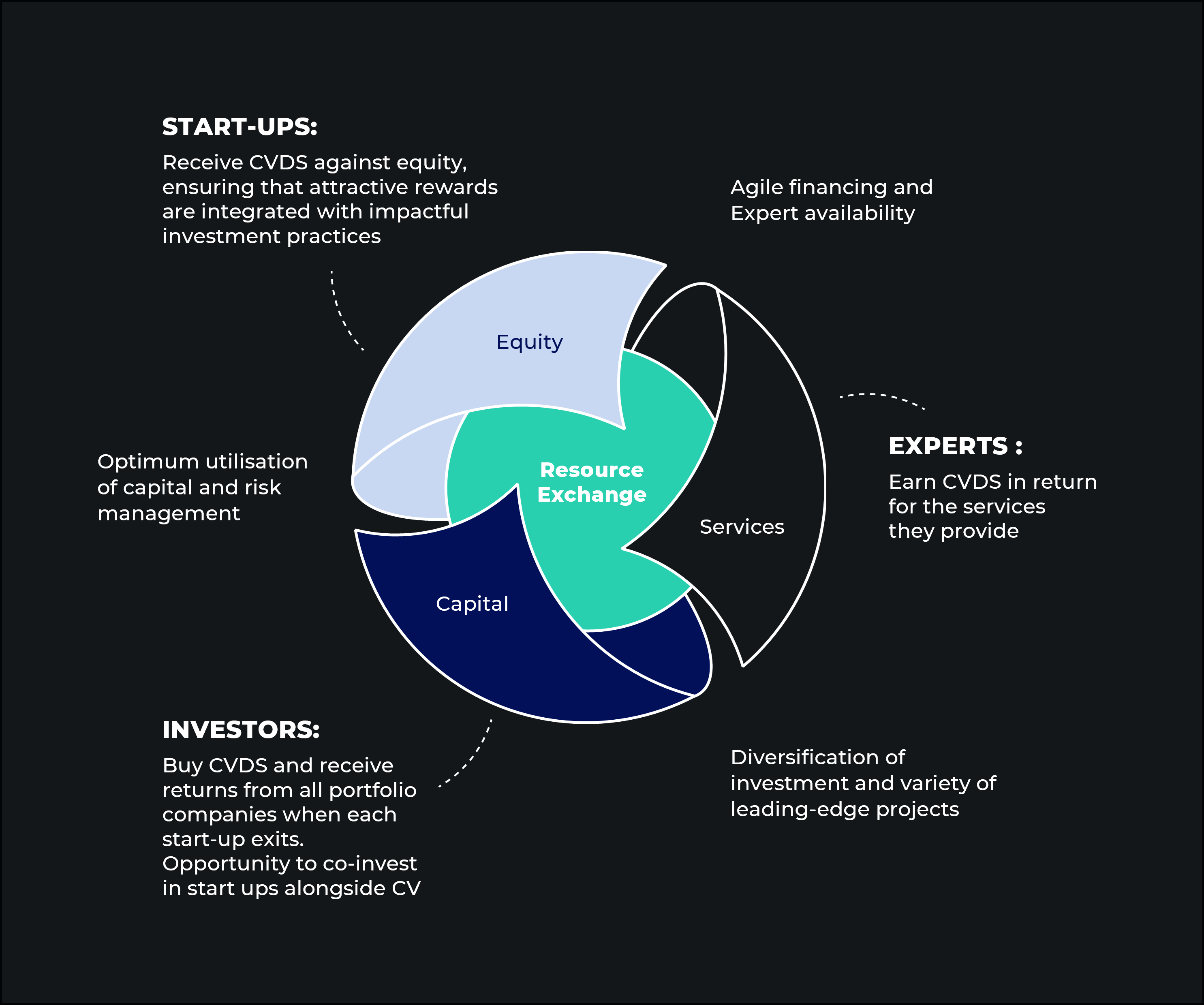Build ecosystems. Create value. Scale impact.
Why This Matters
Building a thriving startup ecosystem isn't about hosting networking events or cutting ribbons. It's about understanding the sophisticated mechanics that turn raw talent and capital into sustainable innovation engines. This playbook cuts through the noise to focus on terms that actually move the needle for serious ecosystem builders.
These aren't textbook definitions. They're operational insights from builders who've scaled ecosystems from zero to billion-dollar valuations. Master these concepts, and you'll spot bottlenecks before they choke growth, design interventions that actually work, and measure what matters.
The Core Mechanics
💰 Anti-Dilution Provisions
What ecosystem builders need to know: These investor protections can poison your ecosystem's deal flow. When early investors demand heavy anti-dilution, follow-on rounds become toxic for founders.
Your intervention: Educate local angels on founder-friendly terms. Run workshops on weighted average vs. full ratchet. Track deal terms across your ecosystem—heavy anti-dilution is a red flag that you need better investor education.
Impact: Healthy anti-dilution norms increase follow-on funding success by 40%+.
📊 ARR (Annual Recurring Revenue)
What ecosystem builders need to know: ARR isn't just a metric—it's the backbone of SaaS ecosystem health. Track aggregate ARR across your portfolio to spot sector trends and identify scaling bottlenecks.
Your intervention: Create ARR benchmarking programs. Help founders normalize ARR calculations. Build data sharing agreements that let you track ecosystem-wide growth without exposing individual company data.
Impact: Ecosystems with clear ARR benchmarks see 35% faster scaling among SaaS startups.
🌉 Bridge Financing
What ecosystem builders need to know: Heavy bridge financing signals ecosystem dysfunction. If startups constantly need bridge rounds, your venture pipeline has structural problems.
Your intervention: Map bridge financing patterns. High bridge activity means either: 1) Your investors aren't writing big enough checks, 2) Your startups aren't hitting milestones, or 3) Your ecosystem lacks growth-stage capital.
Impact: Healthy ecosystems have <15% of companies requiring bridge financing between major rounds.
🎯 CAC (Customer Acquisition Cost)
What ecosystem builders need to know: High CAC kills more startups than bad technology. Track CAC trends across your ecosystem to identify market saturation and channel effectiveness.
Your intervention: Build shared learning programs around acquisition channels. Create cost-sharing initiatives for expensive channels (trade shows, enterprise sales). Track CAC:LTV ratios as ecosystem health metrics.
Impact: Ecosystems with CAC sharing programs reduce average acquisition costs by 25%.
📉 Churn Rate
What ecosystem builders need to know: Churn patterns reveal product-market fit across your ecosystem. High churn clusters indicate market timing issues or weak value propositions.
Your intervention: Track churn by sector and stage. Create retention playbooks for common problems. Build customer success communities where startups share retention strategies.
Impact: Focused retention programs can improve ecosystem-wide churn by 20-30%.
🏢 Corporate Venture Capital (CVC)
What ecosystem builders need to know: CVCs can supercharge or stifle your ecosystem. They bring strategic value but move slowly and often have conflicting incentives.
Your intervention: Curate CVC relationships carefully. Create structured programs that give corporates startup exposure without slowing deal flow. Track CVC success rates vs. traditional VCs in your ecosystem.
Impact: Well-managed CVC programs increase exit values by 60% but can slow funding cycles by 40%.
The Flow Dynamics
🔄 Deal Flow
What ecosystem builders need to know: Deal flow isn't quantity—it's quality density. More important: Are your best startups being seen by your best investors?
Your intervention: Map deal flow patterns. Create structured investor-startup matching beyond demo days. Track conversion rates from introduction to term sheet. Build proprietary deal flow for your ecosystem.
Impact: Structured deal flow increases funding success rates by 45%.
📉 Down Round
What ecosystem builders need to know: Down rounds are contagious. One high-profile down round can reset valuations across your entire ecosystem.
Your intervention: Prepare founders for down round scenarios before they need them. Create messaging support for companies going through corrections. Track down round frequency as an ecosystem health metric.
Impact: Ecosystems with down round preparation see 50% faster recovery times.
💵 Dry Powder
What ecosystem builders need to know: Track dry powder levels among your local investors. Low dry powder means your ecosystem will struggle in the next funding cycle.
Your intervention: Map investor deployment rates. Recruit new funds when dry powder drops. Create investor education programs to improve deployment efficiency.
Impact: Monitoring dry powder helps predict funding crunches 6-12 months in advance.
The Talent Engine
🎁 ESOP (Employee Stock Ownership Plan)
What ecosystem builders need to know: ESOPs aren't just HR tools—they're ecosystem wealth distribution mechanisms. Poor ESOP structures concentrate wealth; good ones create lasting economic impact.
Your intervention: Create ESOP best practices. Track equity distribution across your ecosystem. Advocate for tax policies that support employee ownership.
Impact: Strong ESOP cultures increase talent retention by 65% and create more ecosystem millionaires.
🆓 Freemium Models
What ecosystem builders need to know: Freemium can drive viral growth but kills some business models. Track freemium conversion rates across your ecosystem to identify what works.
Your intervention: Create freemium playbooks by industry. Help startups model unit economics properly. Build case studies of successful freemium transitions.
Impact: Proper freemium execution increases customer acquisition by 300%+ but requires 85% better unit economics.
The Capital Architecture
🌱 Evergreen Funds
What ecosystem builders need to know: Evergreen funds provide patient capital that traditional VC funds can't match. They're crucial for deep-tech and long-cycle businesses.
Your intervention: Recruit evergreen capital to your ecosystem. Help them understand local opportunities. Create LP education programs about evergreen benefits.
Impact: Ecosystems with evergreen capital show 40% higher success rates in hardware and biotech.
👨👩👧👦 Family Offices
What ecosystem builders need to know: Family offices are increasingly important but operate differently than institutional investors. They can provide flexible capital but need more education.
Your intervention: Create family office education programs. Build trust through smaller initial investments. Track their success rates vs. traditional VCs.
Impact: Educated family offices invest 3x more frequently in local ecosystems.
📦 Fund of Funds
What ecosystem builders need to know: Fund of funds can bring institutional capital to your ecosystem but add another layer of decision-making.
Your intervention: Build relationships with fund of funds LPs. Help them understand your ecosystem's unique advantages. Track their deployment patterns.
Impact: Fund of funds relationships increase institutional capital by 200%+ but require 18+ month development cycles.
Go-to-Market Mechanics
🚀 Go-to-Market (GTM) Strategy
What ecosystem builders need to know: GTM failures kill more startups than product failures. Track GTM patterns across your ecosystem to identify what channels work for what business models.
Your intervention: Create GTM playbooks by industry and stage. Build shared resources for expensive channels. Track GTM spend efficiency across your portfolio.
Impact: Structured GTM support reduces time-to-market by 35% and improves success rates by 50%.
The Ecosystem Health Metrics
Key Performance Indicators for Ecosystem Builders:
Deal Flow Metrics:
- Investor-startup introduction conversion rates
- Time from introduction to term sheet
- Deal flow quality scores (stage, traction, team)
Capital Efficiency:
- Average CAC across sectors
- Bridge financing frequency
- Dry powder deployment rates
Growth Indicators:
- Aggregate ARR growth
- Churn reduction trends
- GTM success patterns
Wealth Distribution:
- ESOP adoption rates
- Employee equity outcomes
- Founder equity retention
The Bottom Line for Ecosystem Builders
Building a startup ecosystem isn't about quantity—it's about quality density. Every term in this playbook represents a lever you can pull to improve outcomes for founders, investors, and the community.
Your Ecosystem Building Priorities:
- Map the Flow: Track deal flow, capital flow, and talent flow
- Remove Friction: Identify bottlenecks in funding, hiring, and scaling
- Create Leverage: Build shared resources that benefit multiple startups
- Measure What Matters: Focus on metrics that predict long-term ecosystem health
- Think Systems: Every intervention affects multiple stakeholders
Remember: The best ecosystem builders aren't event organizers—they're systems engineers. They understand that changing one variable affects everything else.
The ecosystems that thrive in 2025 will be those that master these sophisticated dynamics while maintaining the human connections that make entrepreneurship possible.
Built by ecosystem operators, for ecosystem builders. Because sustainable growth beats hype cycles.
Glossary Quick Reference
For rapid lookup during ecosystem planning:
- Anti-Dilution: Investor protection that affects follow-on funding
- ARR: Key SaaS metric for ecosystem health tracking
- Bridge Financing: Interim funding that signals ecosystem dysfunction
- CAC: Customer acquisition cost—track across portfolio
- Churn Rate: Retention metric that reveals product-market fit
- CVC: Corporate venture capital—strategic but complex
- Deal Flow: Quality density of investment opportunities
- Down Round: Funding at lower valuation—ecosystem contagion risk
- Dry Powder: Available investment capital—predict funding cycles
- ESOP: Employee equity plans—wealth distribution mechanism
- Evergreen Fund: Patient capital for long-cycle businesses
- Family Office: Growing investor class needing education
- Fund of Funds: Institutional capital access mechanism
- Freemium: Business model requiring careful unit economics
- GTM Strategy: Go-to-market—more important than product
Each term represents an intervention point for ecosystem optimization.



